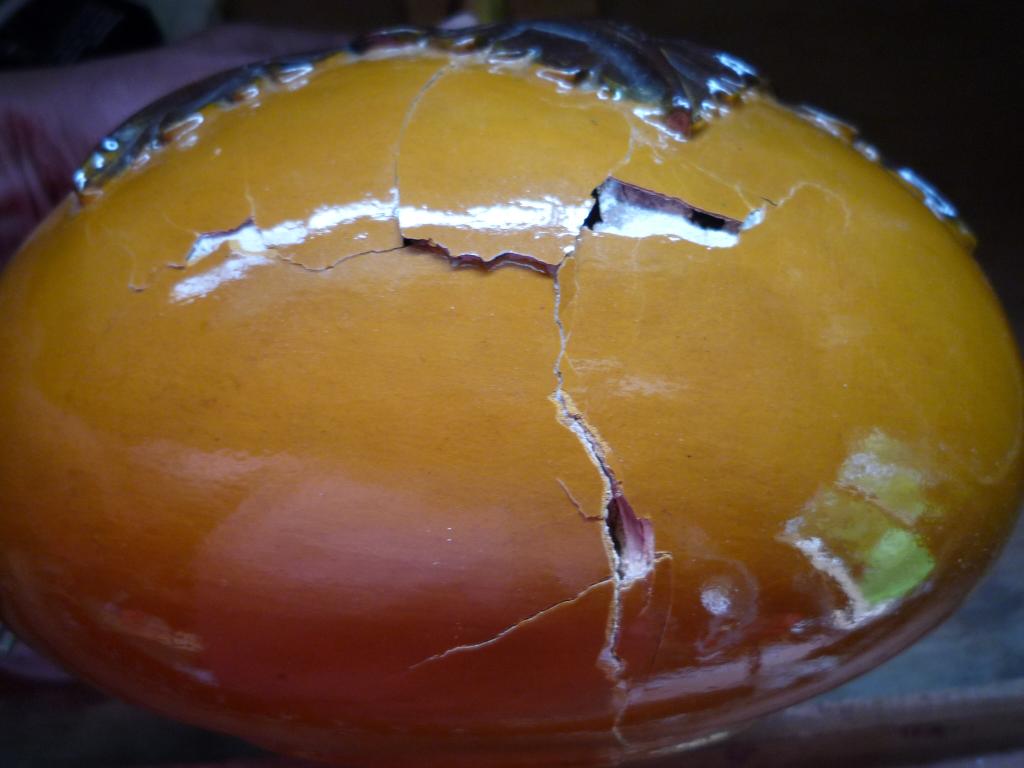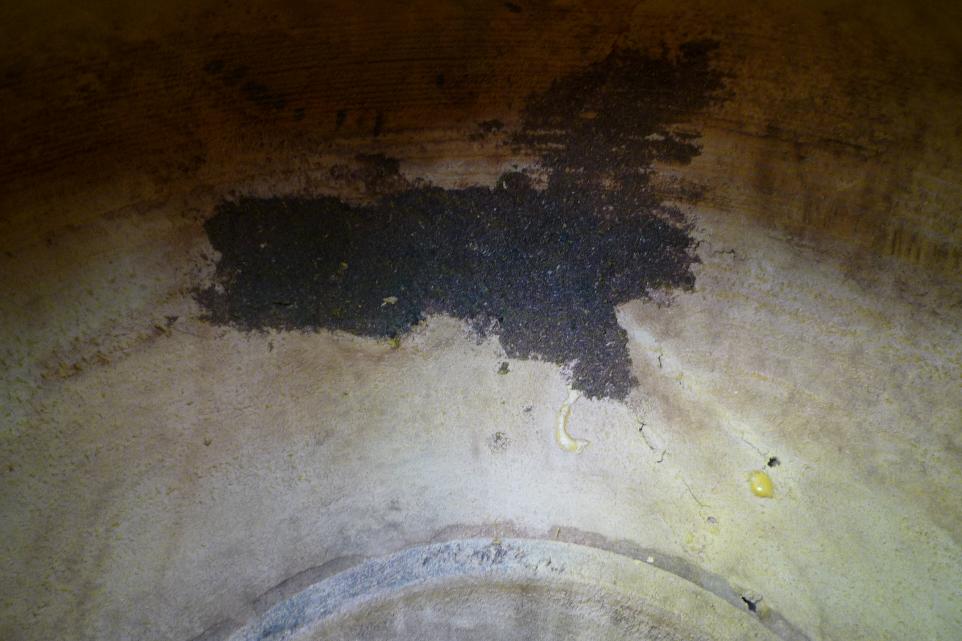 The second tumba of this brandnew beginners G.Rosul sitar has been affected by worms. When the instrument fell down to the ground one day, the gourd got severely broken. Close examination revealed that a big worm has been digging a lot of tunnels through the gourds soft & dry flesh. At some points only the very thin outer peel (hard crust) has been left making this tumba extremely fragile. Where and when this worm got in and out the gourd is hard to find out. But certainly we don’t want this kind of destructive parasites inside our beloved instruments, nor in our house…
The second tumba of this brandnew beginners G.Rosul sitar has been affected by worms. When the instrument fell down to the ground one day, the gourd got severely broken. Close examination revealed that a big worm has been digging a lot of tunnels through the gourds soft & dry flesh. At some points only the very thin outer peel (hard crust) has been left making this tumba extremely fragile. Where and when this worm got in and out the gourd is hard to find out. But certainly we don’t want this kind of destructive parasites inside our beloved instruments, nor in our house… 
The repair of it started with filling up most of the tunnels with a mixture of fine wooden sawdust, water & woodglue. After that the outer shape could be restored using a mixture of wooden sanddust, plaster, woodglue & colourpigment. Finally came the sanding, colouring & the finishing with lacquer. 
At this point I would like to notice that nowadays on more and more (cheap) sitars a synthetic sprayed lacquer finish is applied. The problem is that these synthetic solvents react very different with colourpigments that are used in the traditional shellac finish procedure (french polishing). Even worse, shellac doesn’t attach well to these chemicals. One is obliged to start determinating the kind of chemicals used in this spray, and look for eventual available alternatives which can be applied succesful to it. And I didn’t even mention the bad health aspects which might come along when working with these cheap synthetic mixtures…
But, what to do ? Just don’t buy it ?!! At least ask for traditional finish !!
